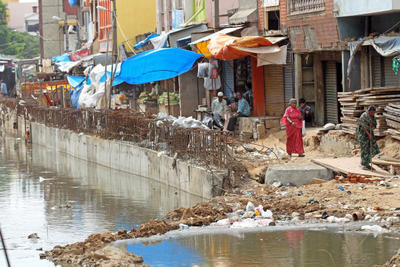Asia recorded the fastest rate of urban growth across all regions in the world during the period 1990 to 2010, from 31.5 per cent to 42.2 per cent — or in other words an increase of over 754 million people which is equal to the combined population of the US and the EU. Estimates show that Asia will reach 50 per cent urbanisation by 2026.
As Asian cities continue to grow, they will face unprecedented challenges and unique opportunities. For example, Asian urbanisation is broad-based rather than concentrated in just a few cities, so one challenge lies in finding suitable solutions for balanced sub-national development. Sixty per cent of the region’s urban population lives in small- and medium-sized cities and will continue to do so for the next two decades. Metropolitan cities (with populations between 1 and 10 million) are home to a third of Asia’s urban population. Yet small- and medium-sized cities labour under the same imperative as metropolitan cities: both need to address the challenges of environmental management and urban and regional planning and development, and both need to adapt their development strategies to their comparative advantage, particularly to their economic, socio-cultural and environmental resources.
Given the crucial role they have played in the region’s economic transformation, Asian cities are now recognised as ‘engines of economic growth’ at both local and national levels. They have capitalised on the opportunities provided by their own demographic expansion and taken advantage of the forces behind globalisation. Five interrelated factors drive the region’s urban economies: export-led growth (though domestic demand is growing); improved urban infrastructure and services; investment in and competition among cities; connectivity to domestic and international markets; and good — and improving — business practices.
Asian cities host well-developed formal sectors in manufacturing and services, simultaneously with informal economies, in both developed and developing countries such as Singapore and India. A significant informal sector has been a feature of the early phases of urbanisation in economies around the world, and is seen as a prerequisite in the transition from developing to developed economies — but in years to come Asian countries will need to ensure that informal sector workers have adequate wages, working conditions and social protection.
Asian cities are highly productive and play a significant role in the world economy. Just over 40 per cent of the region’s population living in cities contributes over 80 per cent of its GDP. Between 1990 and 2010, Asia’s GDP almost doubled from US$8.7 trillion to US$15.3 trillion, which turned the region into a significant contributor to the world economy. But this does not necessarily translate into benefits for all: Asian cities will need to play a key role in the regional economy by providing better employment to informal sector workers and lifting an increasing number of people out of urban poverty. This must go hand in hand with efforts to address urban inequality and improve the lives of over half a billion slum dwellers.
Another characteristic of the Asian urban economy is its ongoing diversification from manufacturing to innovative services. Since the 1980s Asia’s export-oriented economies have made the region into the ‘factory of the world’. But things are changing, with many Asian cities now functioning as ‘knowledge economies’. For example, major Western companies now have their research and development centres in Beijing, Shanghai, Bangalore and Hyderabad, which effectively recognises Asian cities’ growing potential for innovation.
And while Asian cities lead economic growth in the region, they are expected to develop complementary strategies to readjust their own economic specialisation based on comparative advantage, improve vocational education and training for new entrants to the labour market (especially for the poor), and develop quality education systems that can promote critical thinking and problem-solving abilities, as well as information technology skills.
If the 21st century turns out to be the ‘Asian Century’, as a recent publication by the Asian Development Bank suggests, Asian cities will have to lead the region’s economic growth. As part of this process, they will have to readjust and refocus their economic specialisation, whether it is manufacturing or innovative services. New urban economic niches will evolve through learning and experience, or will be invented as needs and opportunities arise.
Continued economic growth within and outside the region — and the attendant increase in energy consumption and greenhouse gas emissions — will exacerbate the pace of climate change. Asian cities will have to explore all possible sources of ideas, including indigenous knowledge, to face the effects of climate change and worsening disaster risks.
By 2050, the population of Asian cities is estimated to grow to 3.4 billion people. To accommodate such a phenomenal demographic expansion, these cities will need to improve their urban and regional planning and development, environmental management and urban governance, and invest heavily in their basic infrastructure and services. The State of Asian Cities 2010/11 report represents a benchmark against which we could measure the progress Asian cities will make in rising up to these unprecedented challenges.
Bharat Dahiya is currently an adjunct faculty member at the Asian Institute of Technology. While at UN-HABITAT he conceptualised and coordinated the preparation of the first-ever United Nations’ report on The State of Asian Cities 2010/11.
A longer version of this article was originally published here on Global Asia.

